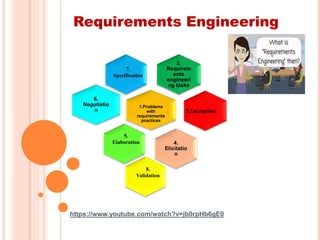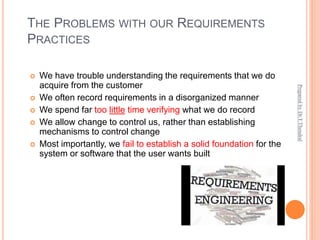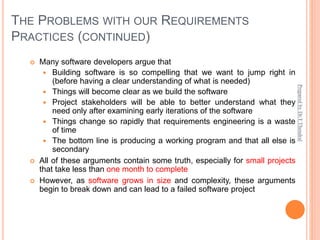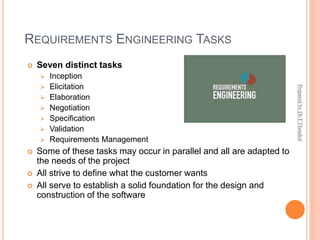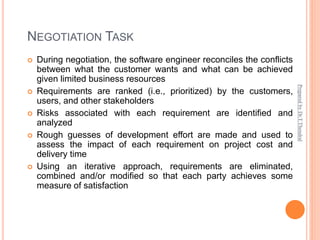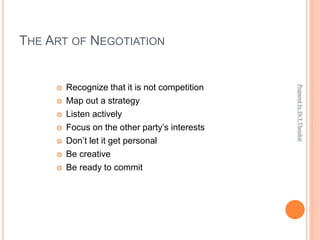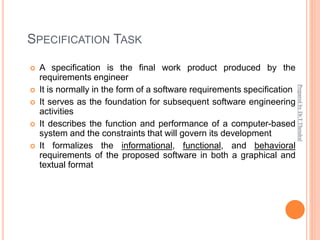The document discusses the challenges faced in requirements engineering, such as disorganized capturing of customer requirements and the failure to control changes effectively. It presents a structured approach to the requirements engineering process, which includes tasks like inception, elicitation, elaboration, negotiation, specification, validation, and requirements management, aimed at defining what the customer needs and establishing a strong foundation for software development. The document emphasizes that understanding and managing requirements is crucial, especially for complex software projects, to prevent failure.
